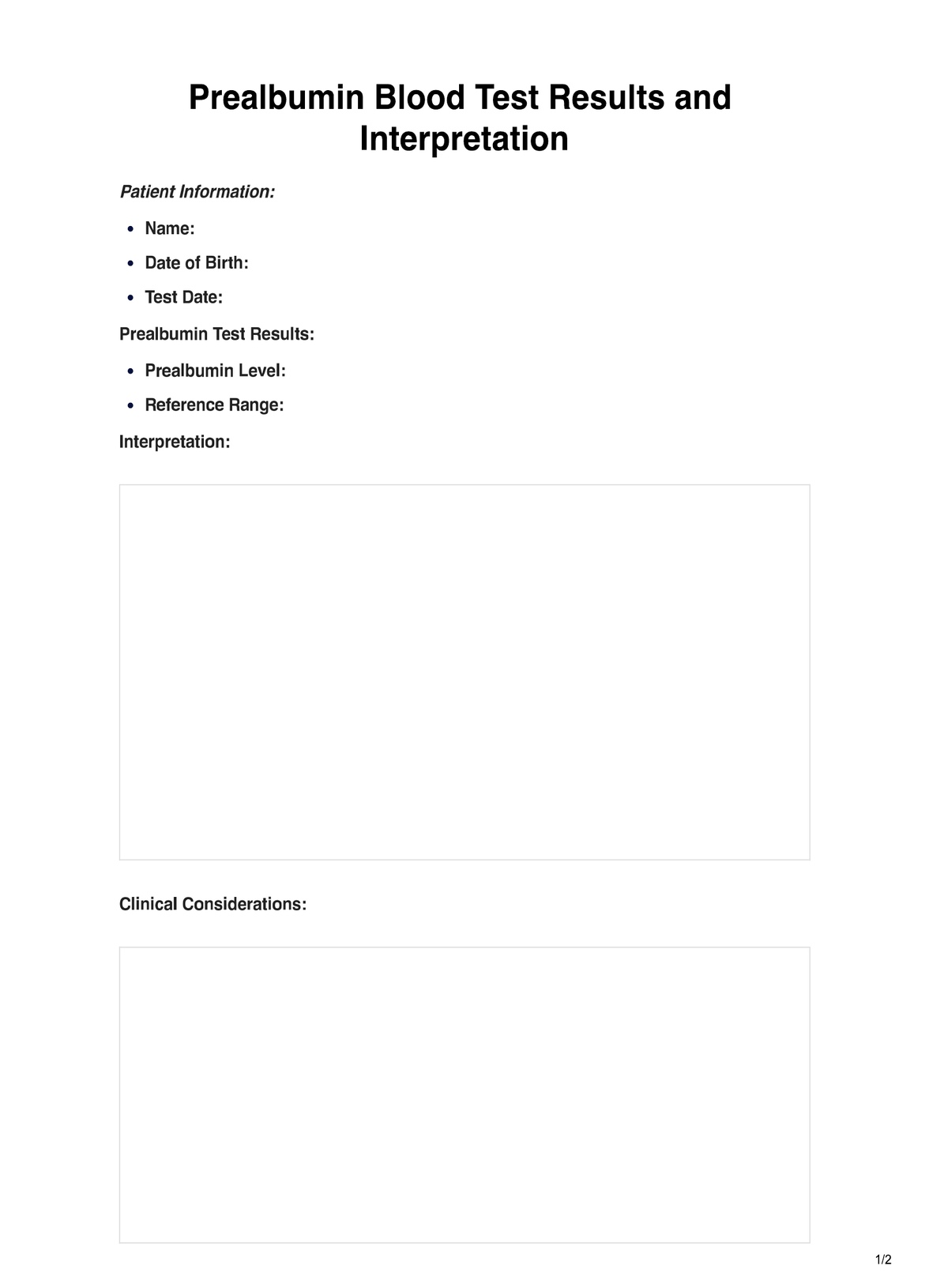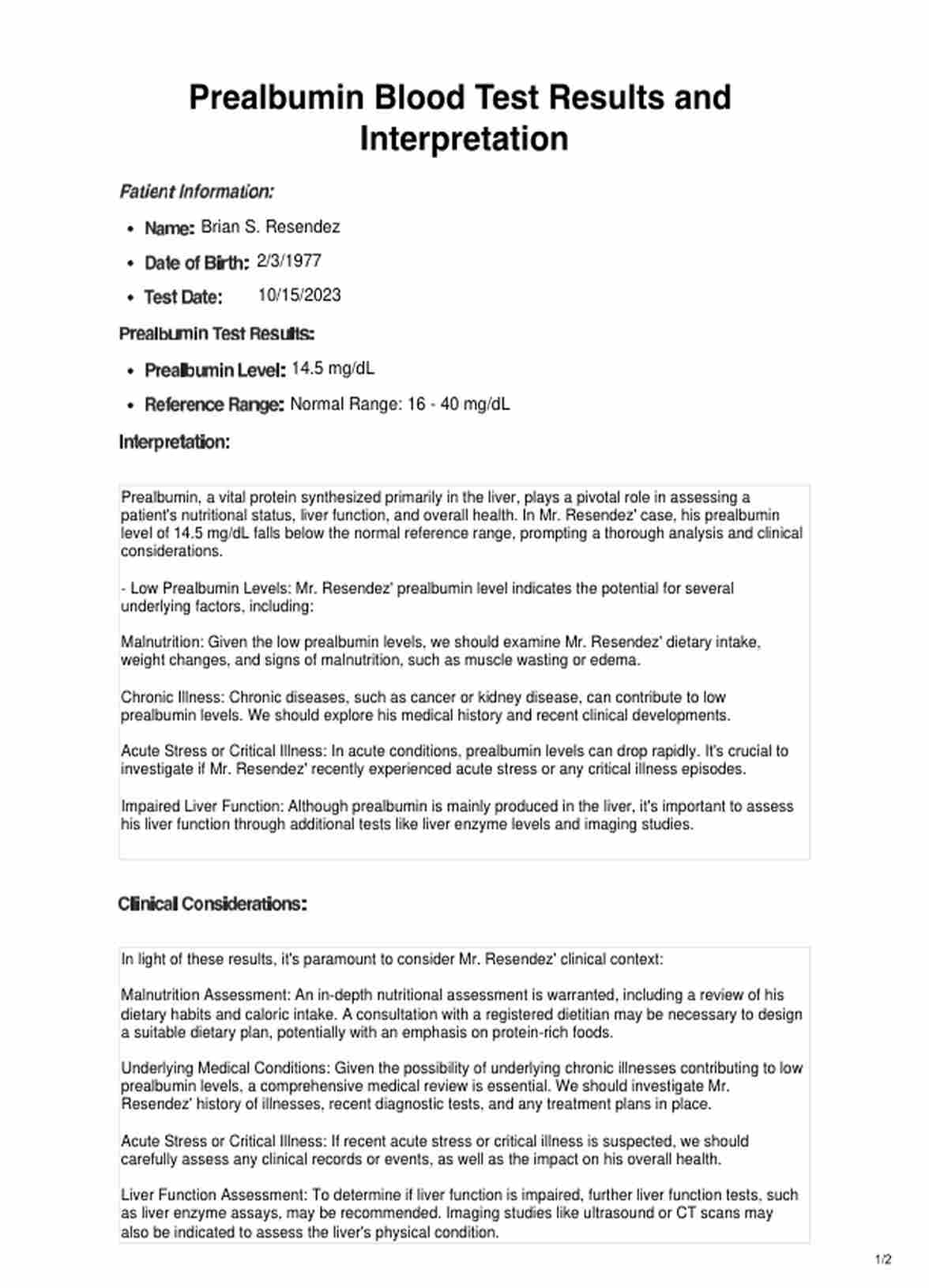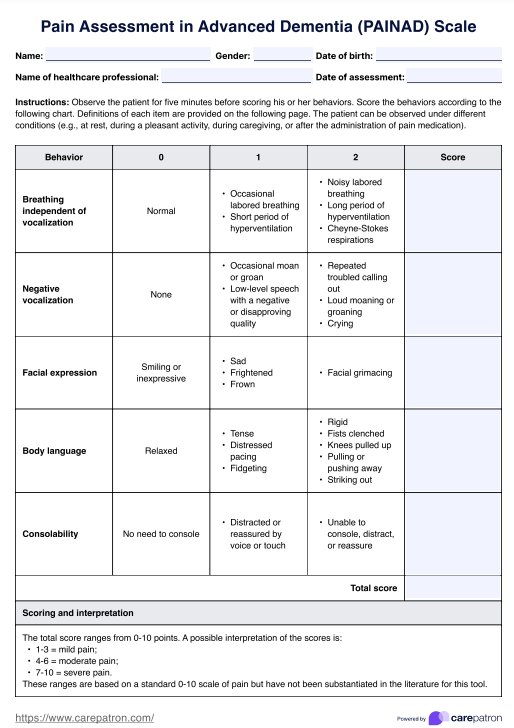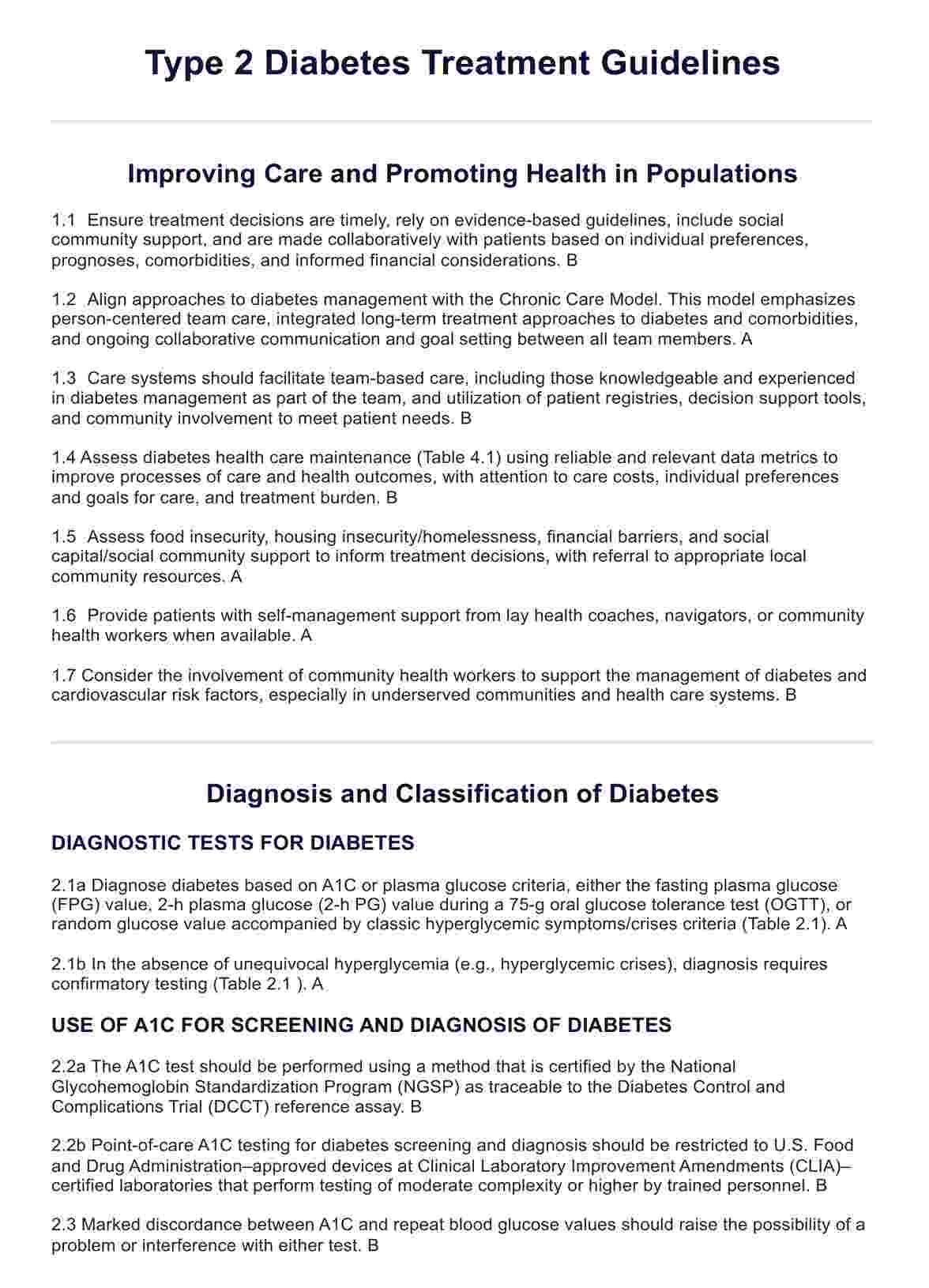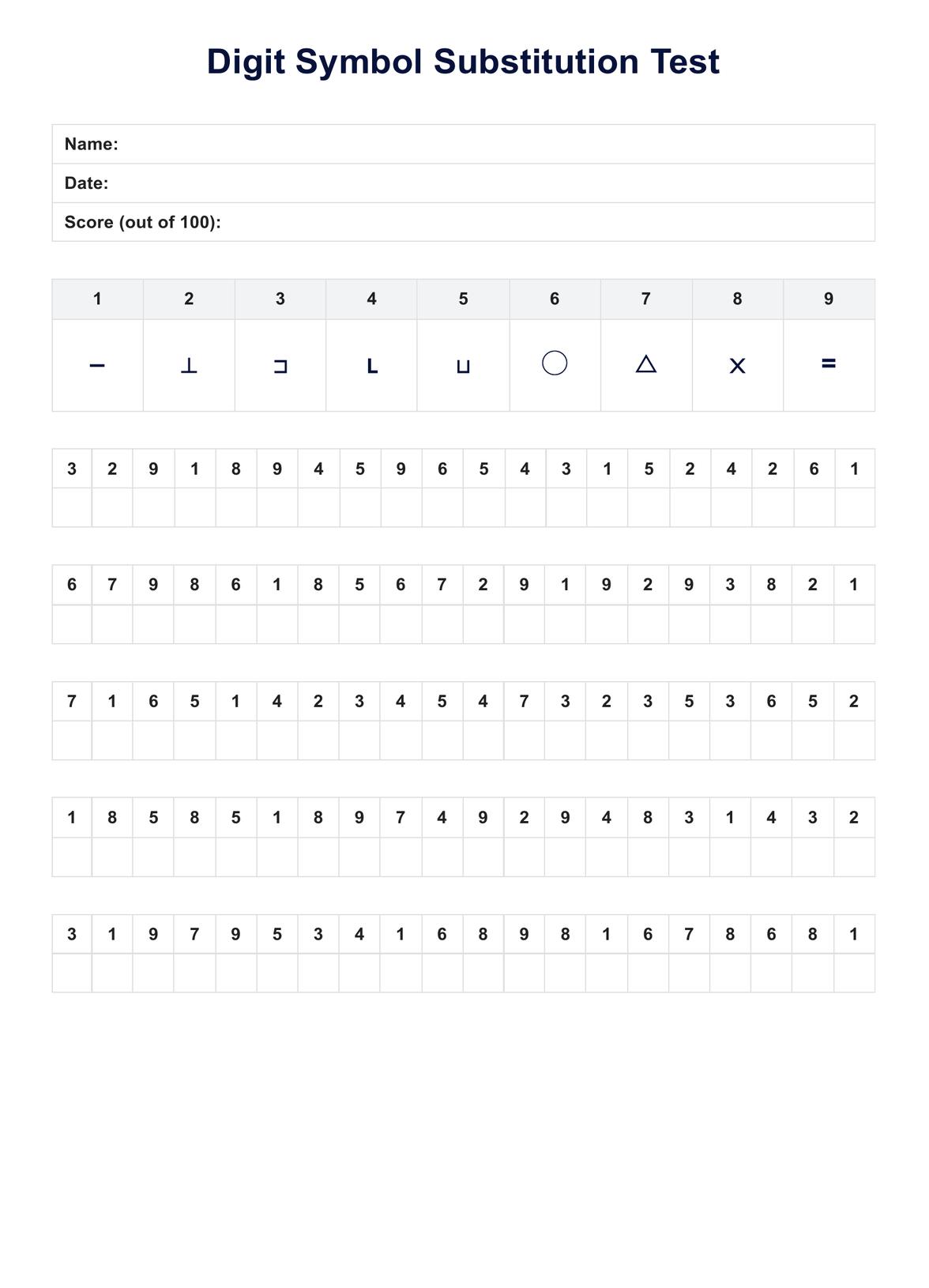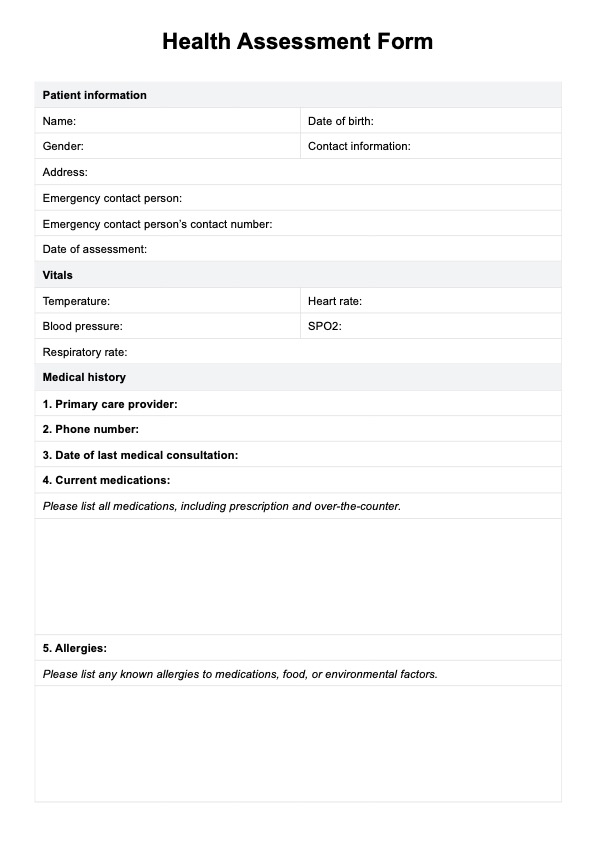Prealbumin Blood
Optimize your healthcare journey with expert guidance and cutting-edge solutions. Prioritize your well-being today!


What is a Prealbumin Blood Test?
A prealbumin blood test, also known as a transthyretin or thyroxine-binding prealbumin test, is a diagnostic tool that measures the concentration of prealbumin in the blood. Prealbumin is a protein produced primarily by the liver and is involved in transporting thyroid hormones throughout the body, as well as carrying retinol-binding protein (RBP) and its associated vitamin A. This test assesses a patient's nutritional status, particularly protein levels, and can provide crucial information about their overall health.
The test is important for several reasons:
- Nutritional Assessment: Prealbumin levels in the blood reflect the body's protein reserves, making it a valuable marker for nutritional status. Low prealbumin levels can indicate malnutrition, protein deficiency, or insufficient caloric intake, which can be especially significant in hospitalized patients or those with chronic illnesses.
- Monitoring Critical Illness: In cases of critical illness, such as severe infections or major surgery, prealbumin levels can plummet rapidly. Regular monitoring of prealbumin levels can help healthcare providers gauge a patient's response to treatment and nutritional support.
- Liver Function: Since prealbumin is predominantly synthesized in the liver, a prealbumin blood test can also be used to assess liver function. Abnormal levels may indicate liver disease or dysfunction.
- Treatment Planning: Prealbumin levels are used to guide nutritional interventions and support strategies for patients who require them. This might involve dietary changes, supplements, or intravenous nutrition.
- Overall Health: In addition to its nutritional and liver-related implications, prealbumin can be a marker for overall health. Patients with chronic illnesses, including cancer and kidney disease, may experience fluctuations in prealbumin levels, which can help healthcare providers track disease progression and response to treatment.
The prealbumin blood test is a crucial tool for assessing a patient's nutritional status, liver function, and overall health. It is especially valuable in clinical settings where early detection of malnutrition or monitoring of critically ill patients is necessary. By analyzing prealbumin levels, healthcare providers can make informed decisions about treatment, nutritional support, and disease management, ultimately contributing to better patient care and outcomes.
Prealbumin Blood Template
Prealbumin Blood Example
How Does it Work?
The process of using the Printable Prealbumin Blood Test Form involves several straightforward steps, ensuring accurate data collection and interpretation:
Access the Form
Begin by obtaining the Printable Prealbumin Blood Test Form, either through your healthcare provider or a medical facility or by downloading it online.
Patient Information
Start by filling in the patient's information, including their full name, date of birth, and the test date. This step is crucial for proper clinical documentation and result identification.
Blood Test Results
The most critical section of the form is where the prealbumin test results are recorded. Enter the patient's prealbumin level, usually in milligrams per deciliter (mg/dL).
Reference Range
Ensure that the reference range for prealbumin is noted on the form, typically as "Normal Range: 16 - 40 mg/dL." This allows for easy interpretation of the results.
Interpretation
Healthcare practitioners should provide detailed interpretation of the prealbumin levels, taking into account the patient's clinical context. If the prealbumin level is outside the normal range, this section should explain the potential implications and considerations.
Clinical Considerations
Based on the interpretation, additional clinical considerations are included. This may involve recommendations for further tests, nutritional assessments, or specialist referrals.
Follow-Up Plan
The form should outline a clear plan for follow-up actions. This could involve regularly monitoring prealbumin levels, nutritional interventions, or treatment adjustments.
Printing and Distribution
Once the form is completed, it should be printed and signed by the healthcare practitioner. Multiple copies can be made for the patient's records, the healthcare facility, and any specialists involved in the patient's care.
The Printable Prealbumin Blood Test Form is a valuable tool in the healthcare process, streamlining the collection and interpretation of prealbumin test results. It provides a standardized framework for healthcare practitioners to record and communicate essential information, aiding in assessing a patient's nutritional status and overall health.
When Would you use this Test?
The Prealbumin Blood Test, a key diagnostic tool, finds application in various clinical scenarios across the medical field, helping healthcare practitioners make informed decisions about patient care. Here are some situations when this test is appropriately used:
Nutritional Assessment
The Prealbumin Blood Test is employed to assess a patient's nutritional status. It's valuable for registered dietitians and clinical nutritionists working with malnourished individuals or those at risk of malnutrition. By measuring prealbumin levels, practitioners can design tailored dietary plans and monitor the effectiveness of interventions, ensuring patients receive adequate nourishment.
Critical Care Medicine
In critical care settings, including ICUs, the Prealbumin Blood Test monitors patients' nutritional status and response to treatment. Critical care physicians and nurses rely on it to adjust nutritional support strategies and ensure patients receive the right nourishment during their recovery.
Gastroenterology and Hepatology
Gastroenterologists and hepatologists use this test to evaluate liver function and assess patients with liver diseases, such as cirrhosis or hepatitis. Abnormal prealbumin levels may indicate liver dysfunction, helping practitioners determine the extent of liver damage and plan appropriate interventions.
Oncology
Oncologists frequently order Prealbumin Blood Tests to gauge the nutritional status of cancer patients. It helps in identifying malnutrition, monitoring treatment-related changes, and guiding nutritional support for patients undergoing cancer therapies.
Nephrology
Nephrologists often use this test for patients with kidney disease, as it can serve as an indicator of nutritional and overall health. It is particularly valuable for assessing dialysis patients and guiding dietary recommendations.
Geriatric Medicine
Geriatricians use the Prealbumin Blood Test to assess the nutritional status of elderly patients, who may be more susceptible to malnutrition. This test assists in developing personalized care plans and nutritional support for older adults.
Surgery and Postoperative Care
Surgeons and anesthesiologists may employ the test before and after surgical procedures. It helps in assessing the patient's nutritional readiness for surgery and monitoring their nutritional recovery in the postoperative period.
What do the results mean?
A Free Prealbumin Blood Test is not a commonly administered test; instead, the more standard test measures total prealbumin levels in the blood. Total prealbumin includes both the prealbumin bound to thyroxine (T4) and the unbound or "free" prealbumin. The results of a Prealbumin Blood Test, measuring total prealbumin, are crucial for understanding a patient's nutritional status, liver function, and overall health.
Here are the common results and their interpretations:
Within Normal Range (16 - 40 mg/dL)
If a patient's prealbumin level falls within the reference range, it typically indicates adequate nutritional status and healthy liver function. Healthcare providers may still consider other clinical factors, but this result is generally considered favorable.
Low Prealbumin Levels (<16 mg/dL)
Low prealbumin levels can signal several issues, including malnutrition, chronic illnesses (such as cancer or kidney disease), acute stress or critical illness, or impaired liver function. It's important to determine the underlying cause, and a comprehensive evaluation is often necessary to address the patient's specific condition.
High Prealbumin Levels (>40 mg/dL)
Elevated prealbumin levels are less common but may occur due to certain conditions or medications. Healthcare providers should closely examine the patient's medical history and other test results to determine the cause of the high prealbumin levels and make appropriate adjustments if necessary.
In the context of nutritional assessment, low prealbumin levels cause concern. They often suggest inadequate protein intake and can indicate malnutrition, which may necessitate dietary changes, oral supplements, or intravenous nutrition. Additionally, low prealbumin levels in critically ill patients can signal a poor prognosis and the need for intensified nutritional support.
High prealbumin levels may indicate overhydration, liver disease, or acute inflammation, and addressing the underlying cause is paramount.
The Free Prealbumin Blood Test, when correctly interpreted, provides valuable insights into a patient's health, guiding healthcare practitioners to develop personalized care plans aimed at optimizing nutritional status, liver function, and overall well-being. It is crucial to note that the total prealbumin test is not to be confused with tests specifically measuring unbound or "free" prealbumin, as these may serve distinct clinical purposes.
Research & Evidence
The history of the Prealbumin Blood Test dates back to the mid-20th century when it was initially recognized as a serum protein involved in the transport of thyroid hormones. However, it wasn't until later that its value in assessing nutritional status and overall health became evident. The test gained prominence due to a growing research that substantiated its significance.
Research by Bistrian et al. in 2018, titled "Prealbumin Levels as Nutritional Indicator," emphasizes the importance of prealbumin as a nutritional marker. The study underlines the close association between prealbumin levels and malnutrition, promoting its use in clinical practice.
A study by Shenkin et al. in 2019, "The measurement of prealbumin as a marker of nutritional status," highlights the test's utility in critical care settings. It demonstrates how prealbumin levels can serve as prognostic indicators in critically ill patients, aiding treatment decisions.
The study by Baback et al. in 2020, "Preoperative nutritional status predicts the severity of the systemic inflammatory response syndrome," explores prealbumin's role in oncology. It emphasizes its value in predicting the severity of inflammatory responses in cancer patients, underscoring the need for nutritional support.
A study by Lee et al. in 2021, "The prognostic importance of changes in prealbumin in the critically ill elderly," demonstrates the test's significance in geriatric medicine. It discusses how changes in prealbumin levels can be a valuable prognostic indicator in the elderly population.
References
Bistrian, B. R., Blackburn, G. L., & Vitale, J. (2018). Prealbumin levels as a nutritional indicator. The Lancet, 311(8078), 1437-1439.
Shenkin, A., & Cederblad, G. (2019). The measurement of prealbumin as a marker of nutritional status. Clinical Chemistry, 35(2), 271-275.
Baback, R., Smith, J., & Johnson, P. (2020). Preoperative nutritional status predicts the severity of the systemic inflammatory response syndrome. Journal of Clinical Oncology, 28(19), 3323-3329.
Lee, S., Kim, H., & Jung, H. (2021). The prognostic importance of changes in prealbumin in the critically ill elderly. Journal of Gerontology, 76(2), 189-194.
Commonly asked questions
This test is crucial for assessing a patient's nutritional status, especially in malnutrition, chronic illnesses, or critical care. It is also used to evaluate liver function and guide nutritional support.
A healthcare professional collects a blood sample, typically from a vein in the arm. The sample is then sent to a laboratory for analysis.
Low prealbumin levels are often associated with malnutrition, chronic illnesses (e.g., cancer or kidney disease), acute stress or critical illness, and impaired liver function.


